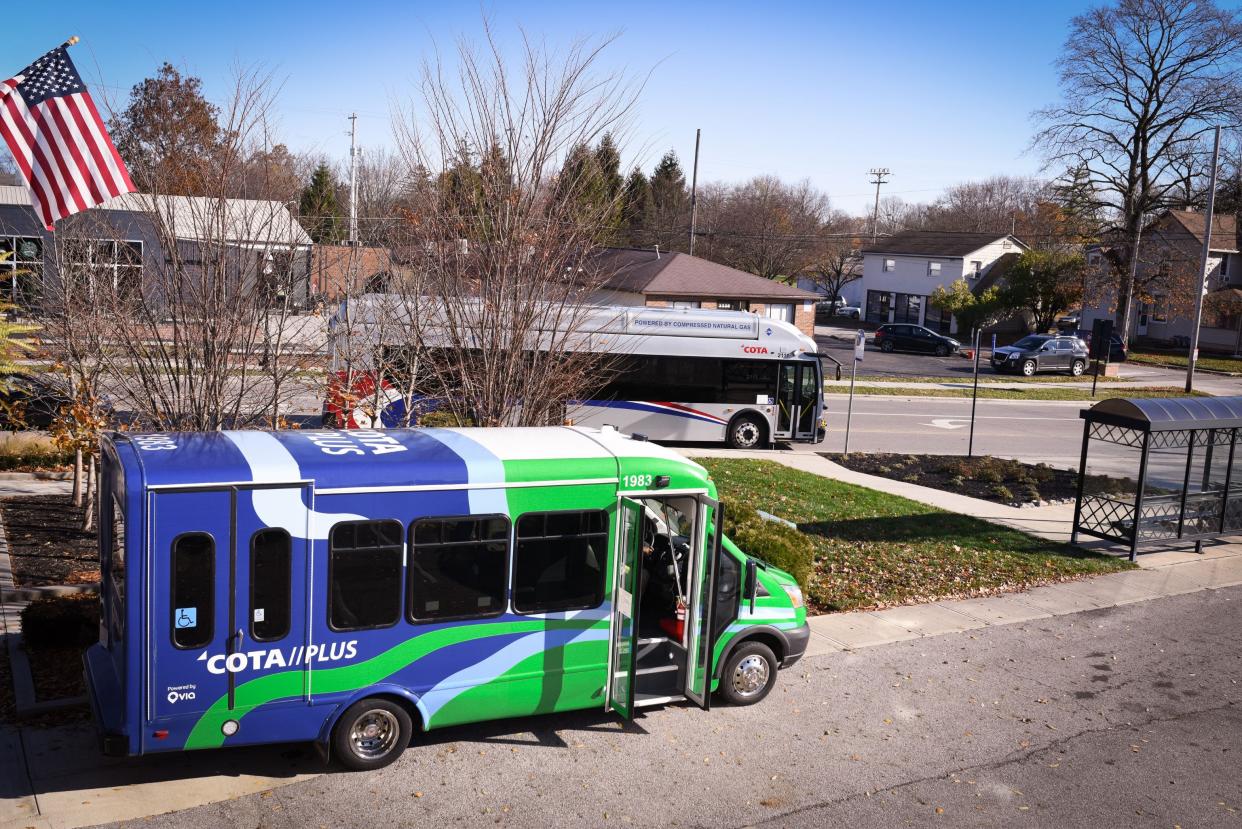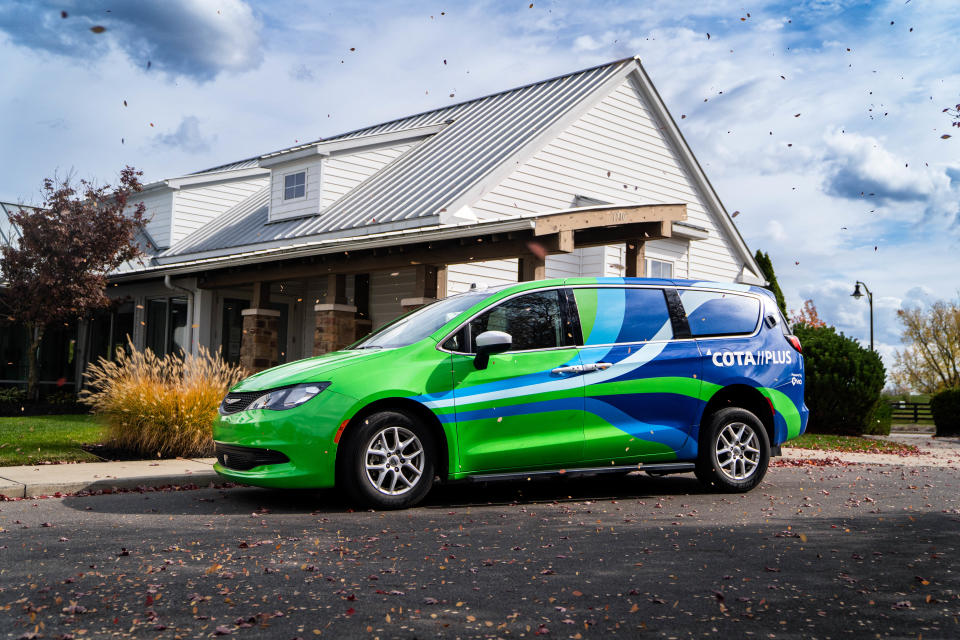COTA program meant to rival Uber and Lyft sees surging popularity in suburbs

For the past five years, those living in certain parts of Franklin County have had access to a ride-sharing service that's as quick — and much cheaper — than Uber, Lyft and similar services.
And while some might roll their eyes when they learn that full-sizedCentral Ohio Transit Authority (COTA) buses are part of the trip, that's not the case if you're taking short trips.
COTA has quietly rolled out its Plus service in three areas: Grove City, Westerville and Columbus' South Side.
If Franklin County voters agree next year to double COTA's share of the county sales tax − from 0.5% to 1% − a large portion of the county would be served, said Aslyne Rodriguez, COTA's senior director of regional partnerships.
"It's nimble and does substitute as a ride-sharing service when it's in the zone. It's focused on short trips within a zone," said Rodriguez. "It's really meant to be taking you to a spot where our transit stops can't take you."
Using a COTA app or calling customer service, riders can be picked up and dropped off anywhere within a zone. To travel outside a zone, riders would take regular, full-sized buses on fixed routes and then call to complete their trips not on a fixed bus route.
So, theoretically, a Clintonville or Upper Arlington resident could take a North High Street bus into Downtown and then hail what COTA calls micro-transit vehicles that would drive you out to Franklinton or German Village. The cost: $2 each way. A point-to-point trip within an existing zone would cost $3.
Ridership has increased dramatically in the three pilot zones:
Grove City:
Year | Completed Rides |
2019 | 2798 |
2020 | 8473 |
2021 | 19,133 |
2022 | 30,223 |
2023 YTD | 29,045 |
South Columbus:
Year | Completed Rides |
2020 | 159 |
2021 | 8,757 |
2022 | 50,190 |
2023 YTD | 72,417 |
Westerville:
Year | Completed Rides |
2020 | 928 |
2021 | 5,656 |
2022 | 14,846 |
2023 YTD | 14,604 |
"I think it's a great case to say that there is great demand for this kind of service," said Sophia Mohr, COTA's chief innovation and technology officer.
In Grove City, 90% of the city's workforce commutes to their jobs from outside the city, said Don Walters, the city's business and community-relations officer, who has worked closely with COTA to expand the service.
"We bugged them so much about local transit that we wanted to pilot with them. And they said they didn't have it in the budget," Walters said. So the city subsidized the program.
Today, the city is spending about $584,000 annually to keep it going, Walters said.
The city has more than 30,000 employees working at 1,200 companies in the city.
"And many of those people are at the bottom of the pay scale, and may have a difficult time keeping and maintaining cars," said Walters. "We had businesses imploring us to figure out housing and transportation for their employees."
As a result, the city ended its own senior citizens bus service, which had cost about $100,000 annually.
COTA notes that point-to-point service might not be as precise as with Uber or Lyft if you hail a vehicle in a busy area.
"We might ask you to walk to a safe area," said Rodriguez.

The average wait times for a vehicle this year are about 11 minutes in Westerville and 14 minutes in Grove City and the South Side, according to COTA data.
There are currently about three micro-transit vehicles that move around in each of the three zones, said Mohr, the COTA technology officer. But that can increase based on demand.
Eight new zones are expected to be created, "based on data and on where the community grows," Mohr said. Their boundaries haven't yet been determined.
The vehicles used for Plus ride-sharing service range from minivans to passenger vans, similar to airport shuttles.
With or without the sales tax increase, COTA hopes to expand the program in the future.
"We have seniors, a ton of students and for workforce reasons," said Rodriguez. "We are pleasantly surprised" by the usage.
"Allowing seniors to visit friends and students to have after-school activities. It's about allowing people to have human connections," she said.
dnarciso@dispatch.com
Micro-transit quick hits
Cost: $3, each trip. $2 if you combine with a fixed-route COTA bus
What's needed: COTA app or a phone to hail a driver. 614-228-1776.
Where offered: Details and maps of the current zones can be found at https://www.cota.com/services/cota-plus.
This article originally appeared on The Columbus Dispatch: COTA says its point-to-point trips as quick,cheaper than Uber, Lyft

